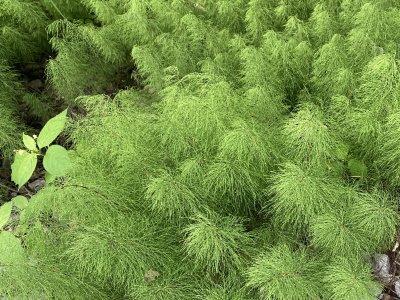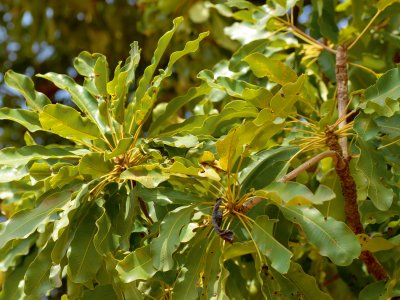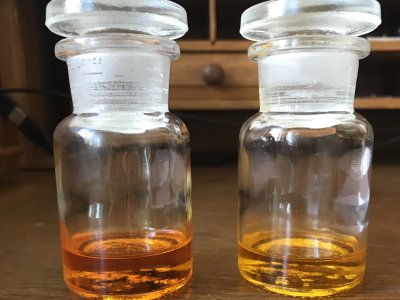A MODERN HERBAL

A MODERN HERBAL
by Mrs. Maud Grieve F.R.H.S.
A brief review of the book and life of this writer and teacher.
By Martin Watt
Maud Grieve's writings on Herbal medicine are still second to none in the depth of knowledge encountered. I highly recommend her book to beginners or to students of herbal medicine. There are of course some errors in it, but despite that, the book is a fountain of knowledge. We also do not know if some of those errors crept in because of the heavy handed editing by Mrs Leyel. Subsequent works written by herbalists have refined some of the knowledge of herbal medicine, mainly based on the chemical aspects. However, in my opinion Maud Grieves book takes some beating due to her expertise on the horticulturel of medicinal plant production. Much of that was 50 years ahead of its time.
The book is still published by miscellaneous publishers as a single large book, or two volumes. I recommend any person interested in any aspects of medicinal plants, to purchase a copy as permanent reference material. It was the first book I ever purchased on herbal medicine and despite my extensive library now, this book is still used as a valued reference source.
Born in Islington on 4th May 1858 and named Sophia Emma Magdalene. She married at a young age and spent many years with her husband in India.
Upon return to England, she moved to The Whins cottage, Chalfont St. Peter, Bucks. Here in 1916 she founded a training school in the cultivation of medicinal plants. Students came from many countries in order to learn about all aspects of medicinal plant production.
Mrs. Grieve made great efforts, to persuade the farming community in the UK, that many of the plants which were imported could easily and profitably be produced at home. At a time when our agriculture is looking to finding new crops, much of the research needed will be found to have already been done by her.
At its height, an extensive business was run from The Whins. Much of this was possible due to Mrs. Grieve's prolific research and writing ability. She produced separate leaflets on every plant to be found in her Herbal, assisted in this by Miss Ella Oswald F.R.H.S. Medalist of the Society of Apothecaries.
These booklets had more information than that now available in her edited book. Unfortunately for Herbalists now, the heavy editing was on hints for gathering, transportation, drying etc. These leaflets were available by post for 9d each, 6 for 4s, 12 for 7/6.
I have many of these originals booklets, some with Mrs. Grieves hand-written notes in purple ink. She was dealing in ton lots of herbs and in one note she talks about purchasing 20 tons of Dandelion roots from one grower.
As well as leaflets on plants now in the book, many other booklets were produced on subjects such as: 'Plants for bees' both for pollen and nectar, 'The soil and its care', 'Economic trees and their by-products', 'Herbs for epicures, vegetarians etc.', 'Fungi as Food and in Medicine', 'Bulbs and Tubers', 'Plants of Sweet Scent', 'Herbs and Vegetables in the Orchard & in the Wild'.
Postal courses in cultivation, harvesting, drying and marketing were also offered at 12 lessons for 5 guineas.
With the death of her husband in 1929 her financial position steadily declined. She had no children to breath new life into the business. She wrote "my Modern Herbal has been published and will be on sale 29th June, but they have not sent me a copy, nor has Mrs. Leyel returned all my reference books". Mrs. Leyel's activities in respect of Mrs. Grieves book collection are a sorry chronicle in themselves.
In 1932 the financial strain was such that Mrs. Grieve could not afford to pay a man to cut firewood. She clearly continued to write because in 1936 she took the manuscript of a new book to her publisher. They refused it and despite her efforts to preserve the work it vanished for over 60 years. Fortunately a single copy of this manuscript is now known to have survived and its location is known to a few people. Whether it ever gets published is another issue. I have a couple of photocopied pages and her 'new' book actually appears to be a major revision of 'a Modern Herbal'
In 1939 her mental state deteriorated and she went into a home. Whins cottage contents were sold in the same year. The garden which at one time had over 400 varieties of medicinal plants now lies under houses, but apparently the cottage still stands.
Maud Grieve died on the 20th December 1941. She may have had a bad ending, but her work will not be forgotten by her admirers now and in the future.
Source and copyright: http://www.aromamedical.org


